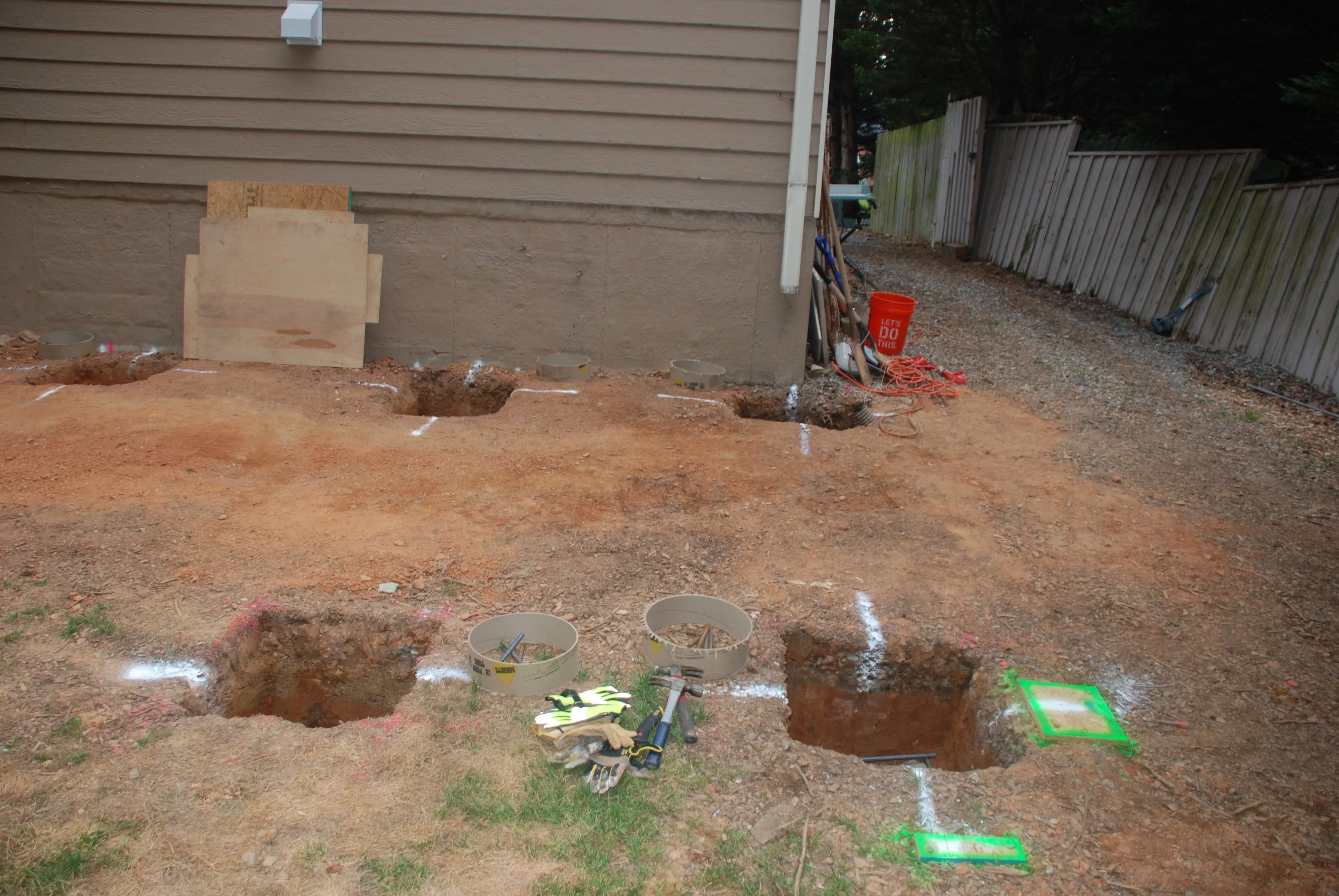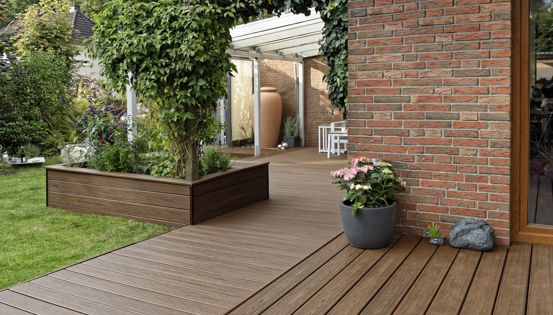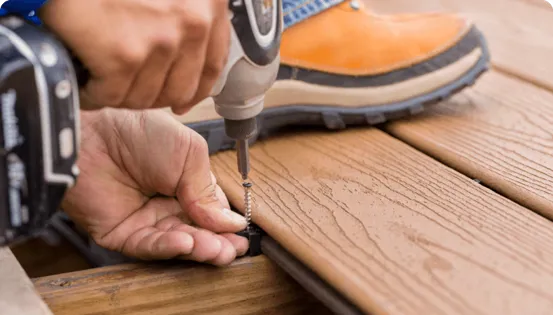Hand digging your footings.
Take your time and invest in a post hole digger, which will work better than a shovel to scoop out dirt. You will need to dig and remove soil until you reach the necessary size and depth specified on your approved plans. If you run into large rocks, this can become a very strenuous process. Using a 6' steel pry bar will help. When the holes are finished, you will want to clean them out by removing any loose dirt and tamping down the base and sides so that they are solid.
You can use a shovel and a post hole digger to excavate your footings by hand. The size of your footing will be determined by the amount of weight or load the footing will need to support and the type of soil in your yard. You will need to dig the footings to a depth below the frost line. For example, the footing depth in Atlanta is 24" deep, NJ is 36" and Minneapolis is 42".
To be safe, always call your utility providers before you dig. Have your gas, electric, water and other utilities marked before excavating. This service is free and usually requires about two days notice. Cable TV lines and sprinkler lines will have to be marked separately.
You may want to create a bell at the base; you can do this by expanding the bottom to the required size. Once the holes are ready, you will want to protect them from collapse until after you have had your footing inspected and can fill them in with concrete. Depending on how you plan to finish your footings, you may need to haul away the excess dirt. Plan for this or you may end up killing a great deal of your grass.
Mechanized Excavation
Most contractors use front-end loaders equipped with a hydraulic auger to dig footings. You can also rent a one or two person gas powered auger to save you considerable time and effort. With these machines, you can even dig through ice, snow and frozen soil during the winter. You will need to have yard access to drive the machine into position. Fences and certain kinds of landscaping may make this impossible. If you are going to use a machine that you are not familiar with, make sure to read the operating instructions and take proper safety precautions to prevent an accident. Be aware that driving and excavating through grass can cause yard damage. To reduce this damage, you may want to have a couple of helpers lay plywood under the vehicle's tires or use a track unit. Try to avoid driving on extremely wet yards and/or up steep hills. Even after using a mechanical auger you will still need to use a post hole digger or shovel to finish the job by cleaning out the holes and tamping down the bottom and sides. A solid base of soil will prevent the footings from sinking.
Many professional deck builders use Bobcat equipment with hydraulic augers to dig deck footings. This can really speed up the process. However, some locations, such as fenced in yards and steep slopes, can't be accessed with such large machinery. In these cases, you will need to hand dig your deck footings.
Deck footings need to be dug below the frost line. Make sure the bottoms and sides of the holes are compact and solid before pouring your concrete. You can dig the footings 6" deeper than the frost line. Use a 4x4 post to compact the soil at the bottom of the hole and then add 6" of gravel for better drainage under the footing. If you are cutting the cardboard sonotubes in half with a handsaw, we recommend installing the uncut end on the top. The forms can be left in the hole after you pour the concrete.







